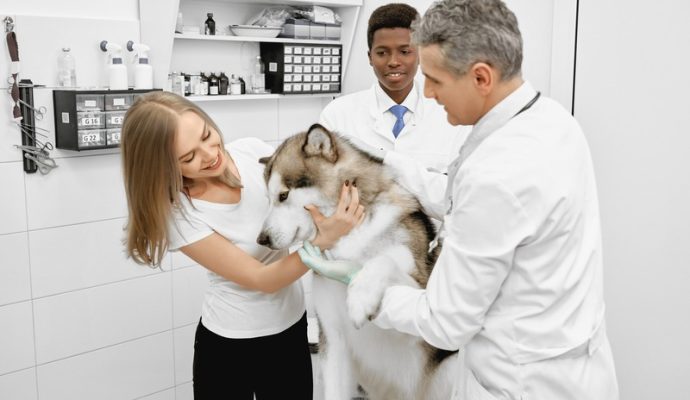In a world where we care about our pets’ health, stopping problems before they start is essential. Laser therapy is a new and exciting way to help keep our pets healthy. It used to be something you’d only hear about in made-up stories, but now lasers are important for improving pets’ lives. They don’t hurt, they don’t cut the skin, and they work well. This article is about how laser treatments are changing how we look after our pets’ health and why pet owners might want to consider using them.
The Essence of Preventive Pet Care
Before we jump into the specifics of laser therapy, let’s first understand preventive pet care. This approach revolves around the idea that it’s better to prevent issues than to treat them once they’ve arisen. It encompasses a variety of practices, from regular vaccinations and parasite control to dental care and nutrition management. At its core, preventive care aims to keep pets healthy and detect potential health issues early on.
Introduction of Laser in Veterinary Practice
Laser therapy, or photobiomodulation, uses light energy to stimulate cell regeneration, increase blood circulation, and reduce inflammation. It’s a technique that has seen widespread adoption in human medicine and, over recent years, has made remarkable inroads into veterinary medicine. But what role does laser play exactly in preventive pet care? Let’s explore.
How Laser Therapy Enhances Preventive Care
Laser therapy, with its benefits, is increasingly becoming part of the preventive care toolkit for pets for several reasons:
-
Non-Invasive Pain Management: First up, laser therapy stands out as a non-invasive way to manage and reduce pain. Whether it’s arthritis, a common ailment in older pets, or injuries from playful roughhousing, laser therapy helps in managing pain without the need for medications.
-
Promoting Healing: Secondly, laser therapy plays a crucial role in accelerating healing. By stimulating cellular activity, it promotes the repair of tissues, making it an excellent tool for recovery post-surgery or for treating wounds.
-
Reducing Inflammation: Another significant benefit is its ability to reduce inflammation, a common precursor to many chronic diseases. Regular laser therapy sessions can help keep inflammation in check, potentially preventing the onset of more serious health issues down the line.
While laser therapy is transformative, it is just one part of a broader preventive care strategy. Routine pet checkup are pivotal for maintaining your pet’s health. These checkups allow veterinarians to conduct comprehensive assessments, which can unearth health concerns that may not yet be visible or symptomatic. Through these visits, vets can track your pet’s health and recommend specific preventive measures, including laser therapy when appropriate.
Specialized Care Through Laser Therapy
Beyond the usual preventive measures, certain conditions require the expertise of an internal medicine vet. These specialists handle complex diseases affecting internal organs and systems, and their approach often integrates advanced treatments, including laser therapy. Whether it’s managing chronic kidney disease or treating gastrointestinal issues, laser therapy under the guidance of an internal medicine vet can be a critical component of a comprehensive care plan.
Making the Decision for Laser Therapy
Given its profound benefits, one might wonder why laser therapy isn’t a standard for all pets. The truth is, like any medical intervention, it may not be suitable for every pet or condition. Decision-making regarding veterinary laser therapy involves careful consideration of the pet’s overall health, age, and specific condition. It requires a collaborative approach between pet owners and their veterinaries to determine the best course of action for each pet’s health needs.
Precautions and Considerations
While laser therapy represents a significant advancement in veterinary care, it is not without its precautions and considerations:
-
Professional Supervision: Laser therapy should always be performed by a trained professional. This ensures the correct dosage of laser energy is applied, minimizing risks and maximizing benefits.
-
Not a Standalone Treatment: It’s important to note that while highly effective, laser therapy is often part of a broader treatment plan, which may include medication, dietary changes, and physical therapy.
-
Patient Selection: Not all pets are ideal candidates for laser therapy. Factors like the pet’s condition, age, and overall health status play a crucial role in determining suitability.
Final Thoughts
Laser therapy is a non-invasive option in preventive pet care to manage pain, lessen inflammation, and heal. It strengthens proactive pet health alongside regular checkups. Using laser therapy can make a positive difference in your pet’s life, though it may need some learning and working with your vet.




